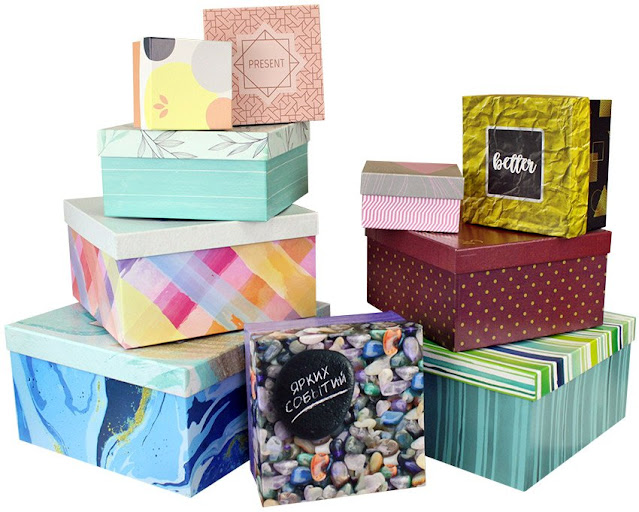What Sizes and Types of Cardboard Boxes Are Available?
Introduction
Navigating the world of cardboard boxes can feel overwhelming with the plethora of options available. Whether you're moving, shipping, or storing, knowing the right sizes and types of cardboard boxes can make a significant difference. Let’s explore the various options to help you choose the perfect box for your needs.
Standard Sizes of Cardboard Boxes
Understanding the standard sizes of cardboard boxes is a great starting point. These sizes are typically designed to accommodate a wide range of items.
Small Boxes
Small boxes are ideal for compact, lightweight items. They typically measure around 12" x 12" x 12" and are perfect for books, small electronics, and household items.
Medium Boxes
Medium boxes, usually around 18" x 18" x 16", are versatile and can hold a variety of items. They are great for clothes, kitchen items, and small appliances.
Large Boxes
Large boxes, often measuring 18" x 18" x 24", are suitable for bulkier items. They can accommodate larger household items like bedding, lamps, and larger kitchen appliances.
Extra-Large Boxes
Extra-large boxes, approximately 24" x 18" x 24", are designed for very large and lightweight items. These are perfect for pillows, comforters, and large but light toys.
Specialized Sizes and Shapes
Sometimes, standard boxes just don't cut it. That’s where specialized sizes and shapes come into play.
Cube Boxes
Cube boxes are equal in height, width, and depth, making them perfect for oddly shaped items. They can prevent items from shifting around during transport.
Tall Boxes
Tall boxes are great for items like lamps, golf clubs, or posters. Their vertical design accommodates long, slender items.
Flat Boxes
Flat boxes are perfect for items like mirrors, picture frames, or TVs. Their shallow depth helps protect flat, fragile items from damage.
Types of Cardboard Boxes
Not all cardboard boxes are created equal. The type of box you choose can affect the protection and durability during transit.
Single-Wall Boxes
Single-wall boxes are the most common type. They consist of a single layer of corrugated cardboard and are best for lightweight items.
Double-Wall Boxes
Double-wall boxes offer extra strength with two layers of corrugated cardboard. They are ideal for heavier or more fragile items that need additional protection.
Triple-Wall Boxes
Triple-wall boxes provide the maximum strength and durability with three layers of corrugated cardboard. These are used for the heaviest and most delicate items, often in industrial settings.
Custom Boxes
Sometimes, you need a box that’s just right for your specific needs. Custom boxes can be the perfect solution.
Made-to-Order Boxes
Custom-made boxes can be designed to fit any size or shape. This is particularly useful for unique items that don’t fit standard box dimensions.
Branded Boxes
For businesses, branded boxes offer a way to enhance brand recognition. These boxes can be customized with logos and company colors, making them perfect for shipping products to customers.
Choosing the Right Box for Your Needs
Selecting the right box involves considering several factors to ensure your items are safe and secure.
Considering Item Dimensions
Measure your items and choose a box that offers a snug fit. This prevents movement and potential damage during transit.
Weight Capacity
Ensure the box can handle the weight of your items. Heavier items require stronger, double or triple-wall boxes.
Fragility of Items
For fragile items, consider boxes with added protection like double or triple walls. Adding padding or foam inserts can also help.
Cost Considerations
While choosing the right box is crucial, keeping costs in mind is also important.
Balancing Budget and Quality
Don’t compromise on quality to save a few bucks. Look for boxes that offer the best balance between cost and protection.
Bulk Purchasing
If you need a lot of boxes, buying in bulk can save you money. Many suppliers offer discounts for large orders.
Environmental Impact
Being mindful of the environmental impact of your shipping choices is more important than ever.
Eco-Friendly Materials
Opt for boxes made from recycled materials. These are just as strong and help reduce your carbon footprint.
Reusing and Recycling
Reuse boxes whenever possible. When they are no longer usable, ensure they are recycled properly to minimize waste.
Conclusion
Choosing the right size and type of cardboard box can make all the difference in ensuring your items arrive safely. Whether you need standard, specialized, or custom boxes, understanding your options and needs will guide you to the perfect choice. Keep in mind the balance between cost, quality, and environmental impact to make the most informed decision.




Comments
Post a Comment